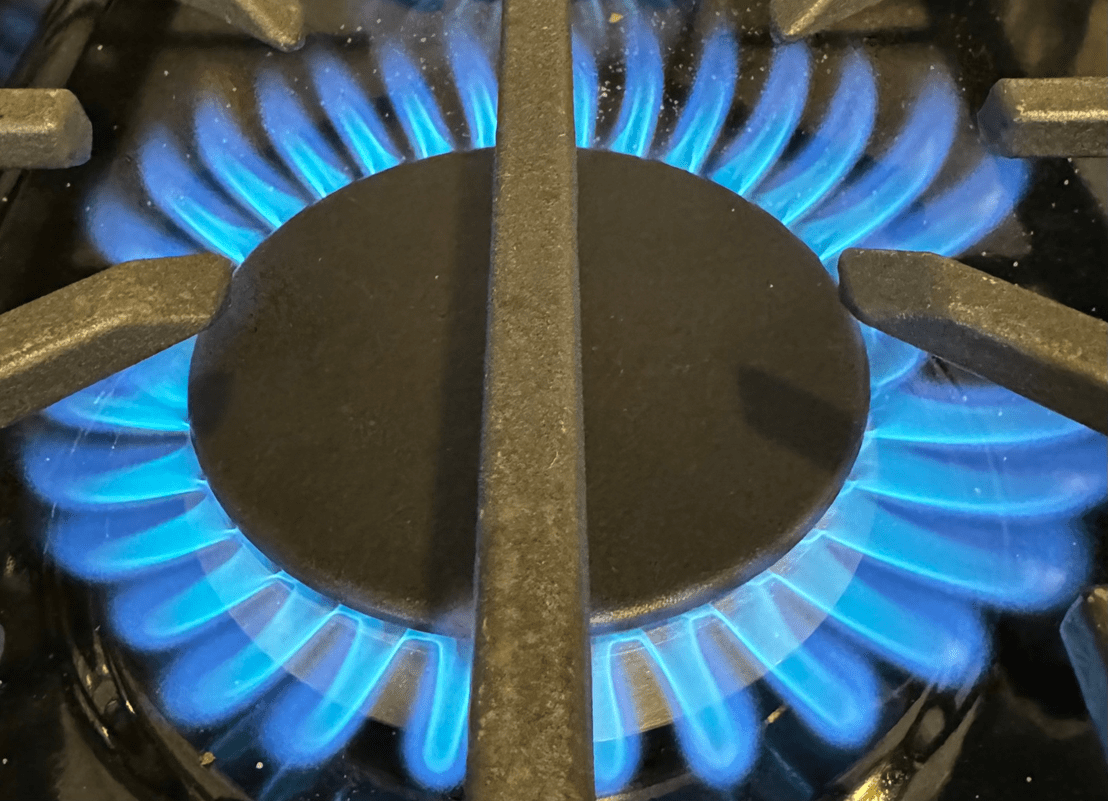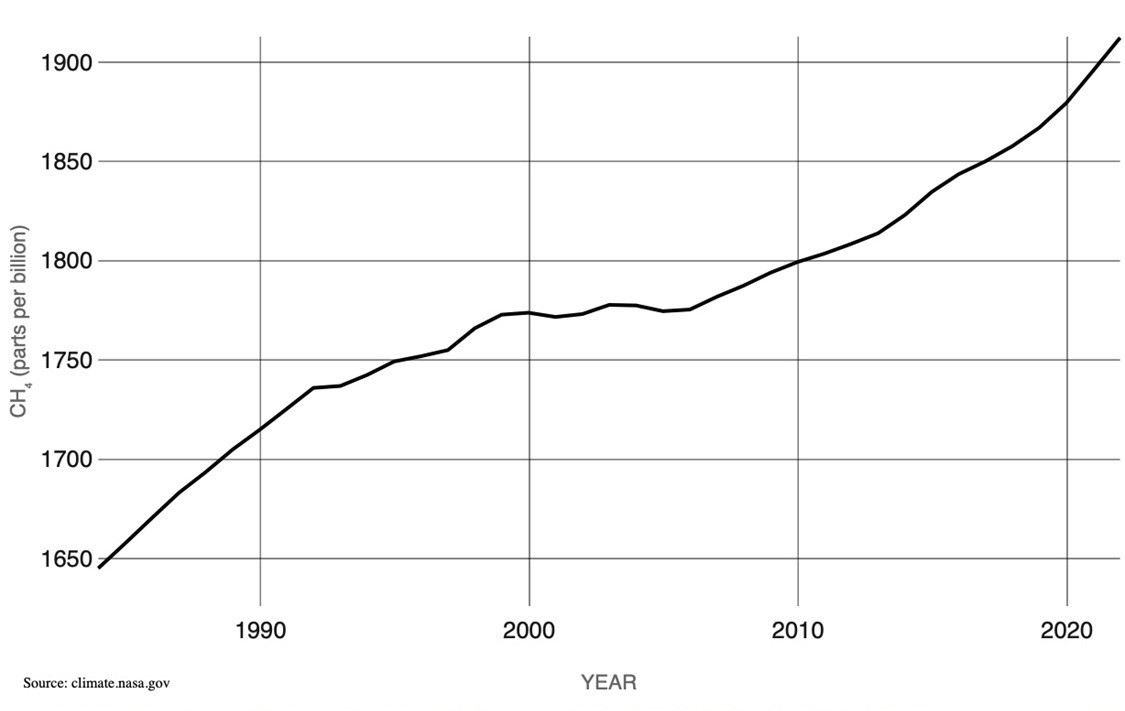Climate Change Conversations: The Methane Equation

Many people, when they hear the phrase “greenhouse gas emissions,” likely think of one greenhouse gas in particular: carbon monoxide. However, there is another greenhouse gas that is far more powerful than CO2: methane. Methane is 34 times more effective in causing global warming than carbon dioxide — and yet, we allow vast quantities of it into our atmosphere every day, through one simple act: throwing away biomaterial.
Any kind of biomaterial — from food scraps to animal waste to wood products — when put into a landfill, decomposes and creates methane. Dumping biomass in landfills, as we do now, releases methane directly into the atmosphere, increasing global warming 34-fold. This is why it’s so important to prevent biomass from going into landfills.
Instead of throwing biomass into landfills, it can actually be used to create a renewable fuel source, through a process called anaerobic digestion. Anaerobic digestion converts biomaterial into biogas, which can be used to run generators, cars, machinery — anything you can run on natural gas, you can run on biogas. This is because biogas is very similar to the fuel we call natural gas; but, instead of coming from fossil fuels deep within the ground, it comes from recycling biomaterial and is therefore renewable.
Like natural gas, biogas is largely made up of methane. “But wait,” you might say, “isn’t methane bad? Shouldn’t you avoid burning methane, wherever it comes from?” Ultimately, yes, we want to get to a point where we are not burning any fuels that release greenhouse gases into the atmosphere. However, when methane is burned, it is the cleanest-burning form of fossil fuel when compared to coal, fuel oil, diesel or gasoline. It is actually far more harmful to release methane in the atmosphere — the way it would if that biomass was simply thrown in a landfill — than if we burn it, unlike coal, fuel oil, diesel or gasoline.

If you’ll allow me to get technical for a moment, here is a calculation to demonstrate the difference between burning methane (in the form of natural gas or biogas) and releasing it into the atmosphere:
The majority of emissions from burning natural or biogas (methane) is CO2. Suppose a natural gas stove uses 1,000,000 BTU of energy (British Thermal Unit, a unit of measurement for energy), it will create 117 pounds of CO2.
One cubic foot of natural gas contains 1,037 BTU of heat content. The formula to calculate how many cubic feet of natural gas is used to create 1 million BTU of energy is: Cubic Feet = BTU/1037 or 964 cubic feet = 1,000,000/1037. In other words, it takes 964 cubic feet of burning natural gas/methane to create 117 pounds of CO2.
Since methane is 34 times more powerful in causing global warming, the equivalent in CO2 to methane is 117 lbs. CO2 x 34 = 3,978 lbs. CO2.
In conclusion, burning 964 cubic feet of natural gas in a stove to 1 million BTU will emit 117 pounds of CO2 into the atmosphere. Releasing 964 cubic feet of natural gas/methane into the atmosphere would be equivalent to releasing 3,978 lbs. CO2 into the atmosphere.
The math is clear: Burning methane, even though it creates CO2, is much better for the environment than releasing it directly into the atmosphere.
In fact, the difference between the effects of methane and CO2 in the atmosphere is so great that experts have even proposed converting methane to CO2 as a means of fighting climate change. In 2019, a group of climate and chemistry experts argued that “capturing atmospheric methane and converting it into less potent carbon dioxide, using special materials and chemical catalysts, may be one way to reduce the warming potential of greenhouse gases in the air.” Once the methane is converted to CO2, it would be released back into the atmosphere. While this “does mean that more CO2 ends up in the air, because it’s taking the place of a more potent greenhouse gas, the immediate effect is to lessen the progress of global warming.”
Methane created from fossil fuels or biomass will always be with us as a source of thermal energy because it is better for the environment to burn it than to release it into the atmosphere. Additionally, producing electricity from fossil fuels is only 33% efficient. The modulating, condensing propane boiler I use as backup to the renewable thermal energy sources in our home is 99% efficient.
My plan is to replace the propane in my boiler with biogas to achieve the goal of being fossil fuel free. From an environmental or climate change perspective, it will make no difference since both are methane. However, using a renewable source for methane rather than a fossil fuel source by redirecting biomass from a landfill will prevent that biomass from releasing methane directly into the atmosphere. Instead, that biomass will create renewable methane to be burned, with the overall result of reducing greenhouse gas emissions and contributing to the reduction of global warming.
The lowest-hanging fruit for reducing greenhouse gas emissions from fossil fuels is coal, fuel oil, diesel and gasoline. This is what we should be focusing on, rather than crusading against natural gas, propane or biogas, the fuels made of methane. It is a huge mistake to ban gas stoves or any other natural gas equipment. It is far better in the context of climate change to burn natural gas/methane than releasing it into the atmosphere.

Frank Dalene, the bestselling author of Decarbonize the World: A Market-Based Solution to the Climate Crisis, is president and CEO of Telemark Inc., a construction services business he cofounded with his father in 1978. Over the past four decades, Telemark has become known for being a national leader, embracing the latest in energy efficiencies. Dalene is innovating the manner in which companies can assess their carbon footprint. Through his ICEMAN (International Carbon Equivalent Mechanism Attributed to Neutrality) methodology, companies can get an accurate snapshot of their product’s carbon emissions on a standardized scale. Dalene has presented keynotes across the world on sustainable construction, carbon neutrality and ICEMAN. Learn more at frankdalene.com.
-PARTNER CONTENT



